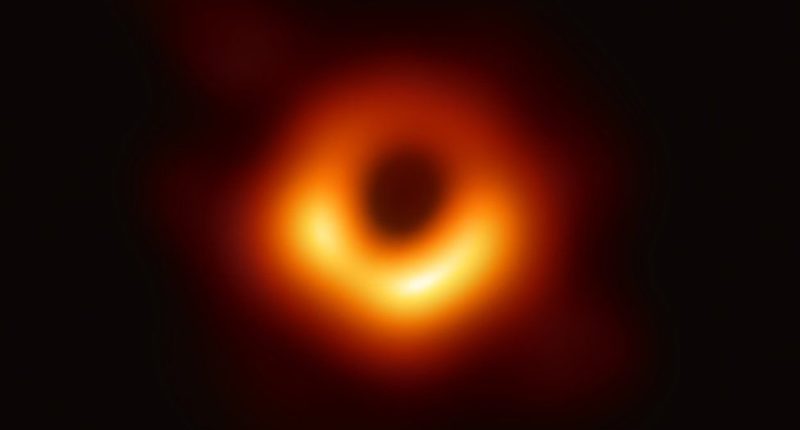Oh yes! Oh gosh yes! Finally, finally we wouldn’t have to rely on fiction and the Star Wars/Interstellar franchises (without taking any credit away from them) to see imagine what a black hole could look like. Because, a group of some of the most awesomest scientists from around the world have taken the first ever, real image of a black hole.
The image that you see above, is exactly what they have taken. And no, it is not an artistic rendition or the magic of VFX. What you see right up is a black hole, and for real.
As is visible in the photograph, the black hole is surrounded by a ring of yellowish golden light, which are superheated gases falling into the perfectly circular hole. The light is brighter than all the billions of other stars in the galaxy combined – which is why it can be seen at such distance from Earth.
The black hole is 500 million trillion km away and was photographed by a network of eight telescopes across the world. It is 3 million times the size of the Earth! Details have been published today in Astrophysical Journal Letters. Prof Heino Falcke, of Radboud University in the Netherlands, who proposed the experiment, told BBC News that the black hole was found in a galaxy called M87.
“What we see is larger than the size of our entire Solar System,” he said. “It has a mass 6.5 billion times that of the Sun. And it is one of the heaviest black holes that we think exists. It is an absolute monster, the heavyweight champion of black holes in the Universe.”
This could well be one of the most historic, iconic space photographs to have ever been taken. What is important to note, is that the image mostly corroborates what Einstein had predicted long back. Heck, even Christopher Nolan predicted the looks of a black hole in Interstellar, pretty much close to how it originally looks.
It took over 200 scientists linking 8 telescopes across the globe to come up with the image. Each of these 8 telescopes is located high up at a variety of purely exotic sites, including on volcanoes in Hawaii and Mexico, mountains in Arizona and the Spanish Sierra Nevada, in the Atacama Desert of Chile, and in Antarctica. The amount of data collected from these telescopes was so huge that 100s of hard drives needed to be flown to a central processing centre, to link up all the data. Internet wasn’t really ready to handle such massive flow of information.





